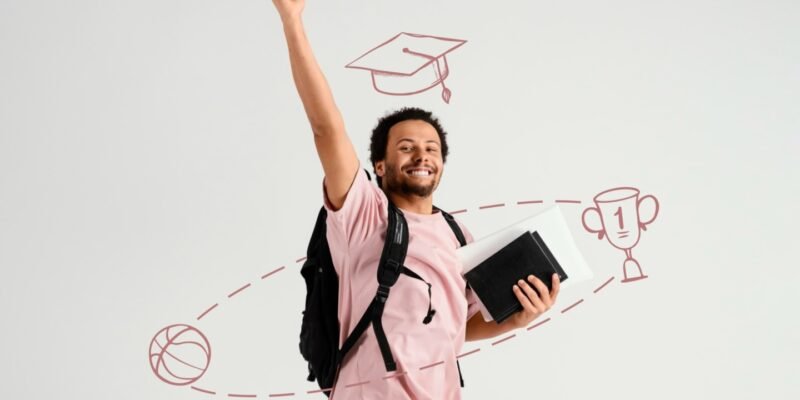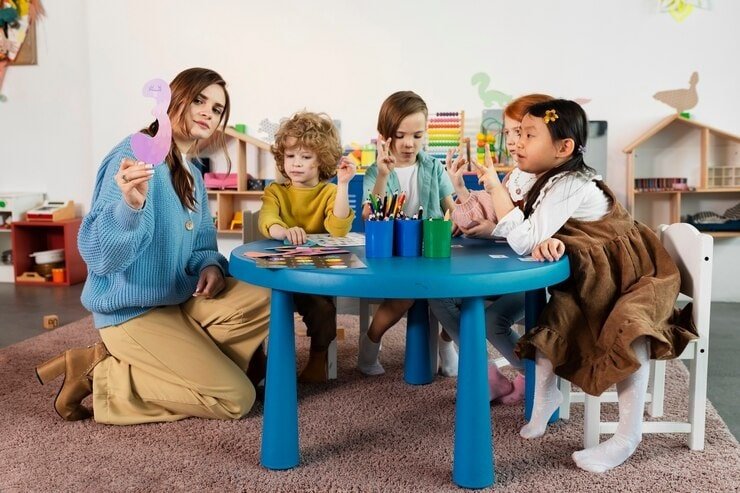
Learning is a lifelong process that is central to human growth and development. In today’s complex and fast-changing world, successful learning is more important than ever before. But what exactly constitutes successful learning? And what factors influence it? This article will explore the key components, determinants, and impacts of effective learning to provide insight into how we can promote better learning outcomes.
Successful learning can be defined as the acquisition of knowledge, skills, and attitudes that enable individuals to achieve their goals and realize their potential. More than just memorizing information, it involves the ability to critically analyze, apply, and build upon what is learned. Successful learning is a active process that engages the mind and promotes deeper understanding.
Some hallmarks of successful learning include:
- Long-term retention of information
- Ability to transfer knowledge to new contexts
- Learning through problem solving rather than mere memorization
- Self-direction and enthusiasm for learning
- Development of learning strategies and critical thinking skills
Understanding the factors that contribute to effective learning can help us cultivate environments and practices that foster more meaningful learning experiences.
Key Components of Successful Learning
Several interdependent cognitive processes and skills form the foundation for successful learning.
Attention and Memory
- Focused attention to absorb information
- Working memory to manipulate information
- Long-term memory to store information
To learn, we must first pay attention to information. Working memory allows us to temporarily hold information, while connecting it to prior knowledge. Encoding information into long-term memory enables storage for later retrieval.
Language and Communication
- Strong literacy and language skills
- Verbal communication abilities
- Listening skills
Language provides the vehicle for communicating and sharing knowledge. Strong literacy skills allow learners to interpret information and articulate ideas. Verbal fluency and listening enable the give-and-take of learning.
Basic Skills
- Foundational abilities in areas like reading, writing and math
- Higher-order skills like analyzing, synthesizing and evaluating
Mastering foundational academic skills equips us to acquire new knowledge. Higher-order skills allow learners to engage with information at deeper levels.
Knowledge
- Breadth of knowledge across disciplines
- Depth of knowledge within specific domains
Existing knowledge provides mental hooks for connecting and integrating new information. A broad knowledge base across different fields allows interdisciplinary learning.
Attitudes
- Motivation and interest
- Self-efficacy and a growth mindset
- Grit and perseverance
Positive learning attitudes like motivation, effort, and self-belief drive persistence. A passion for learning along with self-confidence in one’s abilities is important.
Factors Influencing Successful Learning
Successful learning depends on a variety of interwoven personal, social, and institutional elements.
Individual Factors
- Developmental stage and age
- Prior knowledge and experiences
- Cognitive abilities and learning styles
- Motivation and mindset
Our natural developmental trajectory, existing knowledge, aptitudes, and outlook all impact learning. Prior experiences provide context, while cognitive maturity allows higher-order learning. Personal motivation plays a major role as well.
Environmental Factors
- Quality of instruction
- Positive classroom climate
- Peer interactions and collaboration
- Family support
The learning environment has significant influence. High-quality instruction tailored to diverse needs is essential. Warm, supportive classrooms facilitate participation and risk-taking. Collaborative activities with encouraging peers enhance learning, as does family involvement.
Educational Factors
- School resources and facilities
- Teacher training and professional development
- Curriculum design and delivery
- Assessment methods and feedback
Institutional elements including funding, facilities, training, curriculum, pedagogy, and evaluation shape instructional quality and student experience. Research-backed practices provide optimal learning opportunities. Ongoing feedback also helps refine teaching and learning.
Strategies for Promoting Successful Learning
Certain student-centered, evidence-based strategies in classrooms and learning environments can nurture successful learning.
Setting Clear and Realistic Goals
- Develop specific and measurable learning goals
- Set standards aligned to student abilities
- Celebrate incremental successes
Well-defined goals calibrated to learner levels provide motivation and reinforce growth mindsets. Achievable objectives keep students engaged.
Encouraging Active Learning
- Foster student participation and involvement
- Use hands-on, experiential activities
- Provide problems to solve and inquiries to pursue
When learners are active participants rather than passive receptacles, they gain deeper understanding. Interactive lessons and experiential discovery promote engagement.
Providing a Supportive Environment
- Establish a warm, accepting classroom climate
- Use cooperative group learning
- Respect diversity and different needs
- Give encouragement and feedback
A positive environment facilitates learning by reducing anxiety, building confidence and interdependence, and accommodating different learning styles.
Adapting Teaching Methods
- Assess each student’s needs and abilities
- Use multi-sensory instructional strategies
- Leverage diverse content delivery formats
- Be flexible and responsive in the classroom
Since students have diverse strengths and needs, teachers must tailor instruction accordingly, using a variety of pedagogical techniques, learning tools, and in-the-moment adjustments.
Using Technology Wisely
- Evaluate online tools for suitability
- Provide blended learning where useful
- Teach students to use technology responsibly
- Ensure equitable access to devices
Technology can augment learning by enabling new formats and resources. But care should be taken to use tech enhancements purposefully, ethically, and with equitable access.
The Role of Feedback in Successful Learning
Providing timely, meaningful feedback to learners is a cornerstone of the learning process.
The Importance of Feedback
- Helps identify strengths and areas for improvement
- Guides optimal allocation of study effort
- Provides motivation through visible progress
- Allows teachers to tailor instruction
Constructive feedback illuminates both what students are doing well, and where they need to focus more. This facilitates efficient learning. Documenting improvement also builds confidence.
How Feedback Helps Learners Improve
- Outlines specific expectations and standards
- Fosters metacognitive self-assessment skills
- Enables adjustment of learning strategies
- Encourages seeking assistance when needed
Well-crafted feedback allows students to better understand goals and self-monitor performance. It develops habits of mind that strengthen lifelong learning.
Strategies for Providing Effective Feedback
- Give frequent and immediate comments
- Focus feedback on task performance, not the person
- Balance positive and constructive feedback
- Use varied modes like writing, conferences, rubrics
Timely responses keep students engaged, while respectful, thoughtful comments provide clarity. A mix of appreciation and constructive criticism encourages growth. There are many modalities for sharing feedback.
The Impact of Successful Learning
When people gain knowledge and skills efficiently, it confers many benefits, both individually and collectively.
Personal and Professional Benefits
- Greater academic and career opportunities
- Increased employability and work success
- Financial rewards from qualifications gained
- Sense of achievement and self-actualization
Education creates pathways to personal fulfillment, economic security, and employment. It allows people to achieve their aspirations.
Societal Benefits
- More informed, engaged citizens
- Increased innovation and creativity
- Higher organizational and economic productivity
- Greater social mobility and equity
An educated populace strengthens communities. It drives improvements in institutions, cultural life, and the economy. Education also promotes fairness and diversity.
The Role of Lifelong Learning
- Ongoing learning enables adaptation to change
- Regular upskilling helps people stay relevant
- Pursuing interests provides cognitive stimulation
Lifelong learning is crucial for navigating an ever-evolving world. Flexibility, employability, and a broad perspective come from being open to new knowledge and ideas.
Conclusion
Successful learning is the gateway to individual growth and societal progress. While learning itself involves effort, the right conditions enable it to flourish organically. A supportive environment, high-quality instruction, engaged communities, and a passion for growth – these are the seeds. Nurture them, and the fruits of discovery will follow, ripening over a lifetime of inquiry. Each morsel of wisdom gained makes our collective future brighter.
FAQ’s
What are some key characteristics of successful learners?
Successful learners often exhibit traits like motivation, grit, time management skills, self-regulation, growth mindset, and metacognitive skills. They are actively engaged in the learning process and take ownership of their education.
What role do schools play in promoting successful learning?
Schools shape learning environments and provide resources like qualified teachers, technology, facilities, and curricula. They have a responsibility to adopt evidence-based practices that meet diverse student needs. Schools should foster positive school cultures focused on the whole child.
How can families help support children’s learning success?
Families nurture curiosity and model lifelong learning. Providing enrichment opportunities, having high expectations paired with support, ensuring school attendance, and collaborating with educators all promote success. Establishing routines and study spaces at home also helps.
What specific teaching practices optimize successful learning?
Experts recommend practices like varied instructional approaches, hands-on learning, relevance to real life, higher-order thinking, collaborative activities, ongoing feedback and assessments, and explicit skill building in areas like critical thinking and metacognition.
How does motivation affect learning?
Motivation provides the drive to fully engage in learning. Intrinsic motivation from interest and meaning often leads to the deepest learning. Extrinsic rewards or consequences may also motivate. Appealing to students’ interests and goals boosts motivation.
What is the best way to provide feedback to learners?
Effective feedback is specific, timely, frequent, and constructive. It focuses on the task, not the person. Feedback is most useful when learners have opportunities and support to apply it to improve their work or practice new skills.
Why are learning attitudes and mindsets important?
Persistence, resilience, and self-efficacy influence learning behaviors like effort, help-seeking, and engagement. A growth mindset, where abilities are seen as malleable, promotes motivation and improvement. These attitudes can be intentionally fostered.
What role does technology play in learning?
Technology can enable more customized, interactive, collaborative, and engaging learning opportunities. However, it should enhance, not replace, effective practices. Teacher guidance is key, as are equitable access and learning how to use technology responsibly.
How can we make learning more equitable and inclusive?
Culturally responsive teaching, translating materials for English learners, accommodations for special needs, social-emotional support, and addressing biases within schools all promote more equitable learning. High expectations and rigor for all is vital.













